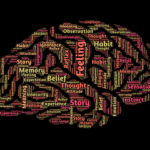I just started writing a new book that focuses on the impact of new technology on children. As I was writing one particular chapter, it struck me that the ideas within had relevance to all of us as we navigate the growing digital landscape.
I see two fundamental differences between connected life, that is, life through the lens of technology, and real life, the one in which we live (I realize that it could be argued that tech life is the real one in which many of us live, but I see that as a problem). First, wired life is not real, meaning experiences are created by technology with the aim of approximating and simulating actual experience. The problem with this “low-resolution” life is that, though it shares similarities to real life, it lacks the high resolution and the granularity of real life. For example, email can be a wonderful means of communication, but it lacks visual input (so important to effective communication), the nuance of facial expressions and body language, and clear emotional content.
Second, digital life is mediated by the technology that makes it possible. There is always something between us and our experiences, whether a text message or a Wii sports game, and, as I just noted, a great deal is lost in the translation.
Susan Greenfield, a noted British neuroscientist who has studied the impact of new technology on people, has articulated some compelling concerns related to the mediated nature of technology. She believes that, for all of its appearance of freedom, technology puts us in a box, a very bright, shiny, and fun box to be sure, but a box nonetheless. You may think those dropdown menus give us options, but what they really do is limit choices that limit our thinking, imaginations, and actions.
Dr. Greenfield suggests that the fixed quality of technology may inhibit the development of creativity which is, by its very nature, open and undefined. Relatedly, she argues that linguistic and visual imagination is being hindered because of the limited and prescribed opportunities that are presented with media.
Dr. Greenfield is also critical of the “contracted, brutalised” (remember that she’s English) writing skills inherent in Twitter and text messages that lack the vocabulary and structure essential for sophisticated thinking and expression.
At an even deeper level, Dr. Greenfield concludes that the substantial changes in our world that are driven by technology will not only affect our thinking and behavior, but there will also be, as the emerging research is demonstrating, , significant alterations in our brains. She cites, as an example, how dopamine, the influential neurochemical that is significantly impacted by technology, reduces activity in the prefrontal cortex, the area most associated with so-called executive functioning including attention, self-control, abstract thinking, planning, decision making. The use of technology has also been shown to influence dopamine in the same way as do sex and gambling.
A (Mostly) Unmediated Life is the Goal
In pulling together this line of thought, let me share with you the kind of experience that I believe we should strive to live. First, our lives should be largely unmediated in which we can have direct access to our experiences. I want to experience life head on and exposed to all that it has to offer, both tidy and messy.
Another thing that makes real life so real is the richness of the sensory experience that it provides: sight, sound, smell, touch, taste, balance, movement, temperature, pain, and emotions (not exactly a sense per se, but experienced acutely in sensory form). Yes, technology has made great advances in replicating the experience of real life, for example, improved visual graphics and sound (e.g., video games), the sensation of balance and movement (e.g., Wii), and, yes, emotionally provocative content, though often artificially created and irrelevant to real life (e.g., FarmVille) or kept at a distance (e.g., Facebook). But, as far as coming even close to the full spectrum of sensory experience? Fuggedaboutit!
Real life offers us experiences that are open-ended, giving us the opportunity to create whatever box we choose based on what the universe of options has to offer. The only limits that exist are those of our creativity and the physical parameters of real life.
Real life is also value driven, meaning the direction that we take our lives is based on what we deem most important. As a result, life has personal meaning and relevance to us. And with that meaning and relevance comes investment, that is to say, caring about what we do and where we direct our lives. Technology, in particular social media that enables us to stay connected with friends and build online communities based on shared values and activities, is moving in that direction, but, as Malcolm Gladwell has pointed out, these wired connections aren’t nearly as powerful as many would like to believe (the uprising in Tunisia was not really the Twitter Revolution).
For much of the technology in which we are immersed, as Susan Greenfield has argued, process, action, and achieving goals trump perspective, context, or relationships. This connection between real life and values is perhaps the most powerful disincentive for the excessive use of technology. Values, meaning, and relevance give real life its power and most of what technology offers is devoid of it.
Finally, and perhaps most importantly, real life, and much of the meaning and satisfaction accrued from it, comes from our relationships with others. The development of our social lives is essential for our psychological and emotional well being. Yes, social media are obviously social in nature, but I see it as being “social lite,” because it limits the richness of human interactions, or “social safe” because it keeps relationships at a comfortable distance.
Fundamentally, technology creates a mediated and low-resolution approximation of life that does offer utilitarian benefits and some entertainment value. But is it “real” enough to want to substitute much of real life? I don’t think so. I’ll take high-resolution and unmediated life any time.






